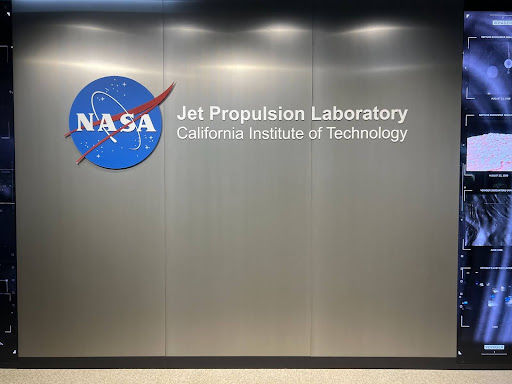
You might have heard a buzz on February 29th from several of your classmates after returning from a field trip with STEM. Attending as a representative from The Neuwirth Times, I was awestruck by the Jet Propulsion Laboratory. The sheer size of scaled-down models was an eye-opener - we forget that satellites must be huge to function properly. Space is a dark and vast area of the universe that we have yet to understand, but through JPL humanity can begin to comprehend what exactly is out there.
Jet Propulsion Laboratory, often referred to as JPL works with NASA and the California Institute of Technology and has 40 active missions in space! If you’ve heard of the rovers Perseverance or Curiosity getting to Mars before, Jet Propulsion Laboratory was behind those missions, as they specialize in designing, assembling, and operating robots that are sent to space as satellites or probes; robots that are not controlled by a human pilot, but are instead coded to pilot themselves.
Beginning in the study of rocket propulsion, Cal-Tech professor Theodore von Kármán was largely unsuccessful in his hazardous experiments. Hence, a group of graduate students and those who enjoyed learning about rockets moved their studies to Arroyo Seco in Rose Bowl, California. As the group found their success, they graduated from rockets to missiles for the U.S. Army Air Corps. Aided in World War 2, JPL produced missiles and eventually tried their hand at launching a satellite in response to the Soviet Union launching Sputnik and Sputnik 2. Explorer 1, launched in 1958 with a Geiger counter developed by James Van Allen, discovered a radiation belt encircling Earth, now named the Van Allen Radiation Belt. Explorer 1 stayed in orbit until 1970, burning up in the Earth’s atmosphere.
Explorer 1 was just the beginning for the U.S. and JPL. The laboratory was now working with the newly formed NASA and more missions were underway. Jet Propulsion has an extensive history that contributed to many discoveries about our planet, other planets, and interstellar space.
On our tour at JPL, we were able to get the history behind the Mars rovers such as Opportunity and Perseverance. The study of Mars began with Viking 1, which was the first spacecraft to land on Mars and search for signs of life. Sojourner was next as the first wheeled vehicle on Mars, paving the path for Spirit and Opportunity. The most recent rover, Perseverance, lovingly nicknamed “Percy” by our tour guide, was tasked with exploring the surface and discovering more about the geological formations and processes on Mars.
Jet Propulsion Laboratory is not simply about engineering. While there are many different types of engineering careers an individual could pursue at JPL, they offer many opportunities for those interested in life sciences, computer science, and communications. JPL also offers internships to students with a 3.0 GPA enrolled in undergraduate and graduate programs from an accredited university. For anyone interested in pursuing a career in STEM and wants to work with launching satellites into space, then JPL might just be perfect for you!
Ultimately, the trip to JPL was an amazing experience for me and the other 34 students who attended, most of whom have never even heard of half of those missions and what they do there. One can tell that the engineers and everyone who works at JPL have a determination to know more and to understand what the universe has to offer us. When speaking with trip organizer and STEM teacher, Mr. Stempel, about the purpose of this trip, he remarked that JPL was an “opportunity” for students to see “the application of robotics and engineering in space exploration” and the “process of missions” in real-time. For example, the tour stops in Mission Control and another room where engineers were focusing on the Europa Clipper brought visible excitement to Stempel’s face as they showed the rise of aerospace engineering in California; providing a chance in which students can choose to pursue their passion, but also to stay local to their home.
So, in the words of the video presentation made by JPL, “Every atom in your body was once inside a star. So the next time you look up into the night sky, remember, you are quite literally, stardust. You and your dreams belong to the stars, and they, to you.”








Comments